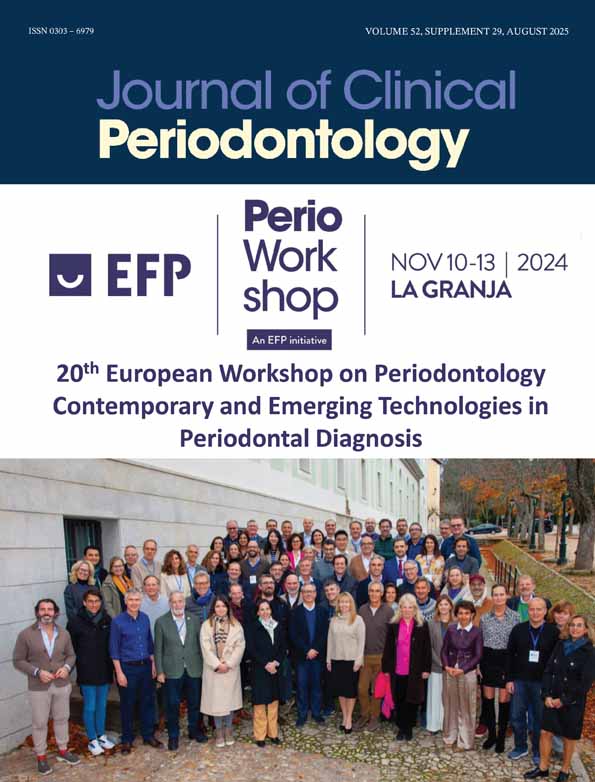Evaluation of gingival and periodontal conditions following causal periodontal treatment in patients treated with nifedipine and diltiazem*
Sponsored by the “Comision Interministerial de Ciencia y Technologia” Spain (SAL 89-1101
Abstract
Abstract It is established that phenytoin, cyclosporin and some calcium antagonists produce gingival overgrowth, but it is not known how this condition may respond to causal periodontal treatment. In order to find out, a longitudinal study was carried out, over a year, comparing a group of patients who were given nifedipine (NG, n= 18) and another group who were given diltiazem (DG. n= 13) with 2 others: one comprised cardiopathic patients who took no calcium antagonists (CG, n= 12) and the other contained patients who were medically healthy. with moderate periodontitis (HG, n= 12). On their basal visit, they were examined and instructed in oral hygiene, and then given causal periodontal treatment, being seen again at 4 and 8 months, when hygiene instructions were reinforced. They were seen for the last time at 12 months, when they were again examined. Groups NG and DG, on their basal visit, showed larger gum size than groups HG and CG. which was statistically significant; on their final visit, these differences remained only at the interproximal level. The number of patients with gingival overgrowth-taking the average of group HG as a minimal value-was much higher in groups CG (92%). DG (100%) and NG (89%) on the basal visit; on the final visit, the differences remained only in groups DG (85%) and NG (83%). The probing pocket depth reduction was much greater in groups HG and CG than in DG and NG. basically due to a greater gaining on clinical attachment level. The % of sites in which the pocket depth improved by more than 2 mm was 39.8% in HG, 54.5% in CG, 23.7% in DG and 28.7% in NG. The % of sites where the attachment gain by more than 2 mm was 46.2% in HG, 55.5% in CG, 22.8% in DG and 21.4% in NG. The amount of plaque and bleeding on probing, which was similar in all groups on the basal visit, decreased throughout the study, especially between the basal and 2nd visit in groups HG and CG. We have demonstrated that patients that take nifedipine and diltiazem show a larger gum size and their response to causal periodontal treatment is poorer than in the healthy and the cardiac groups.




